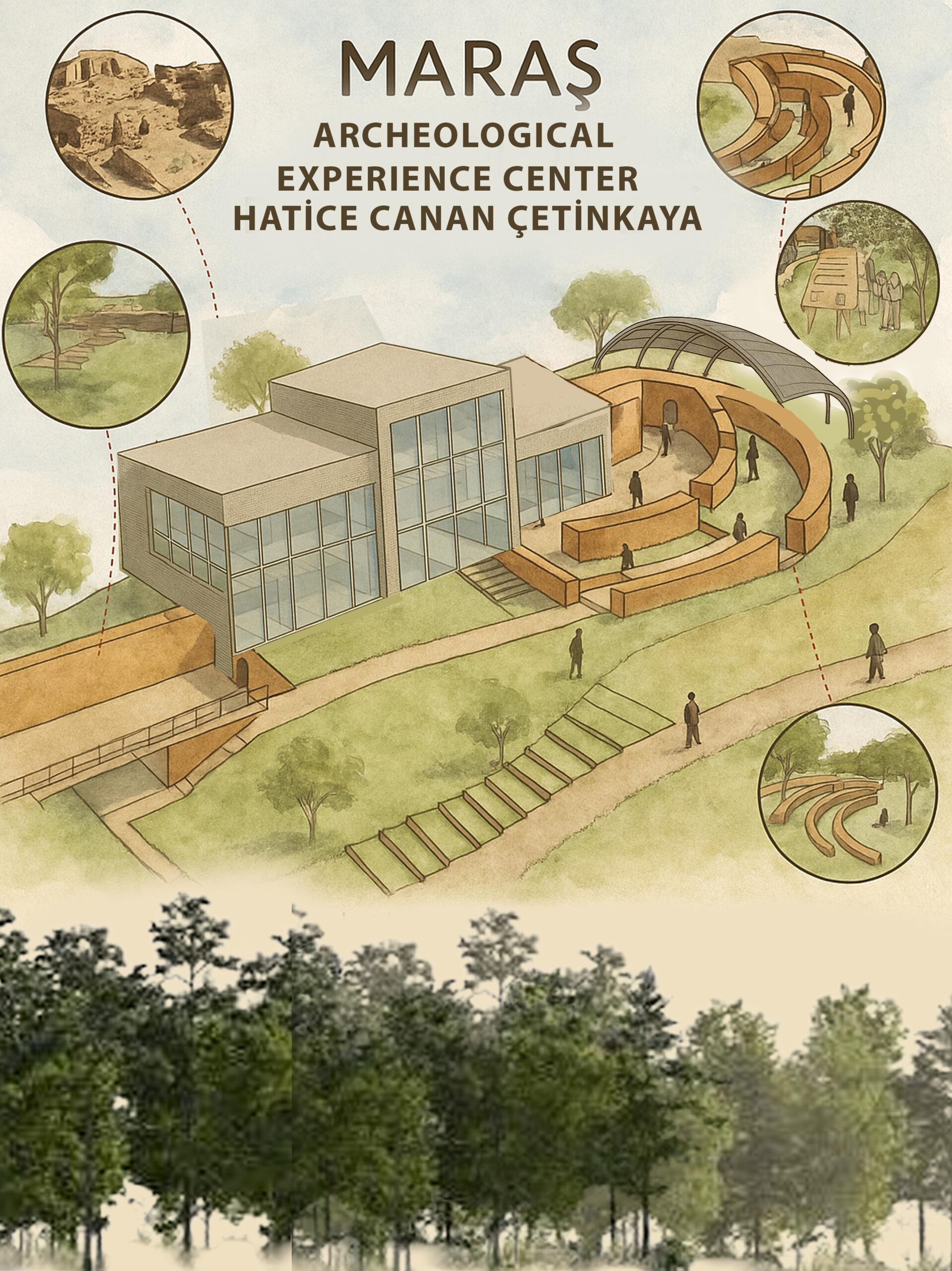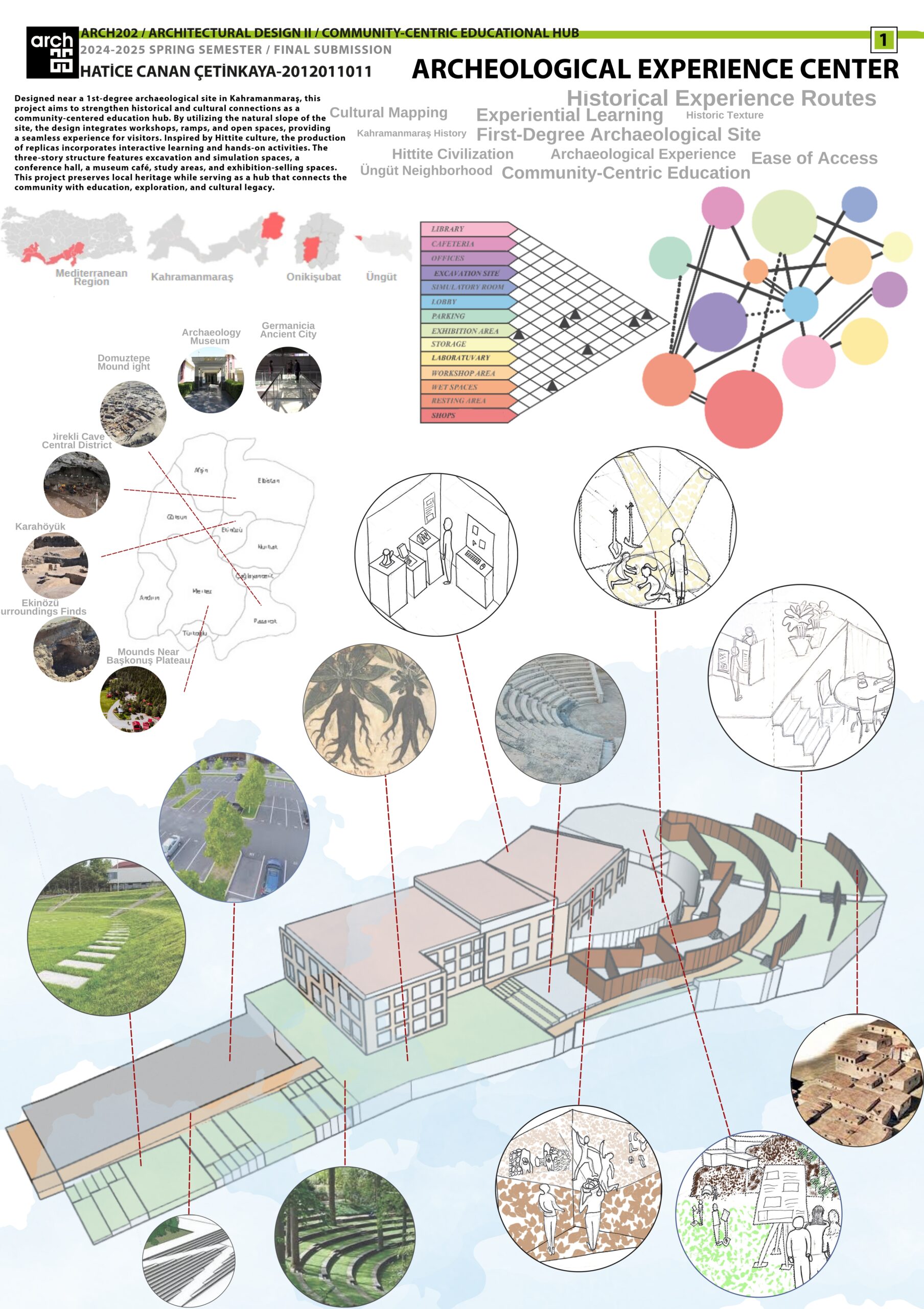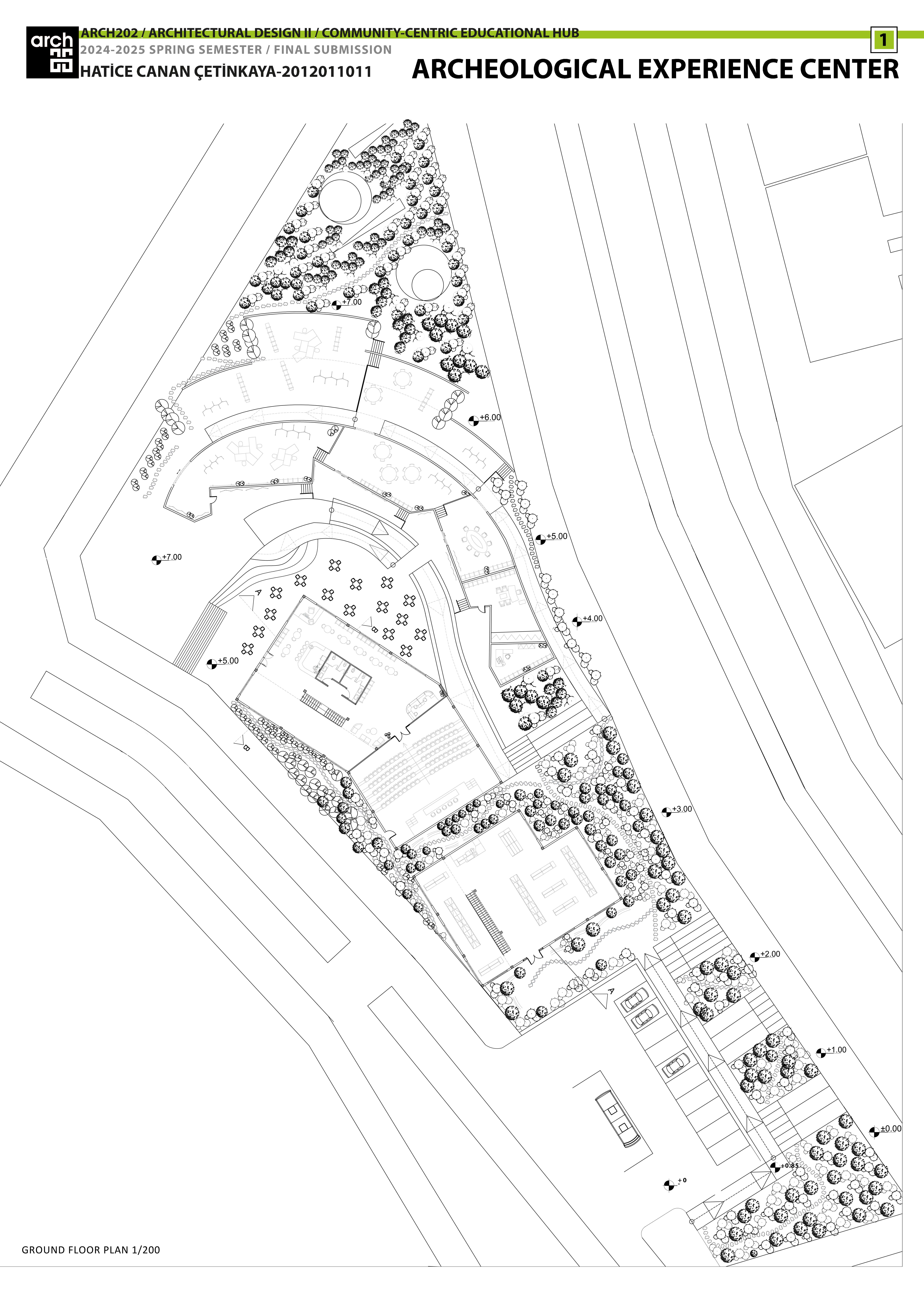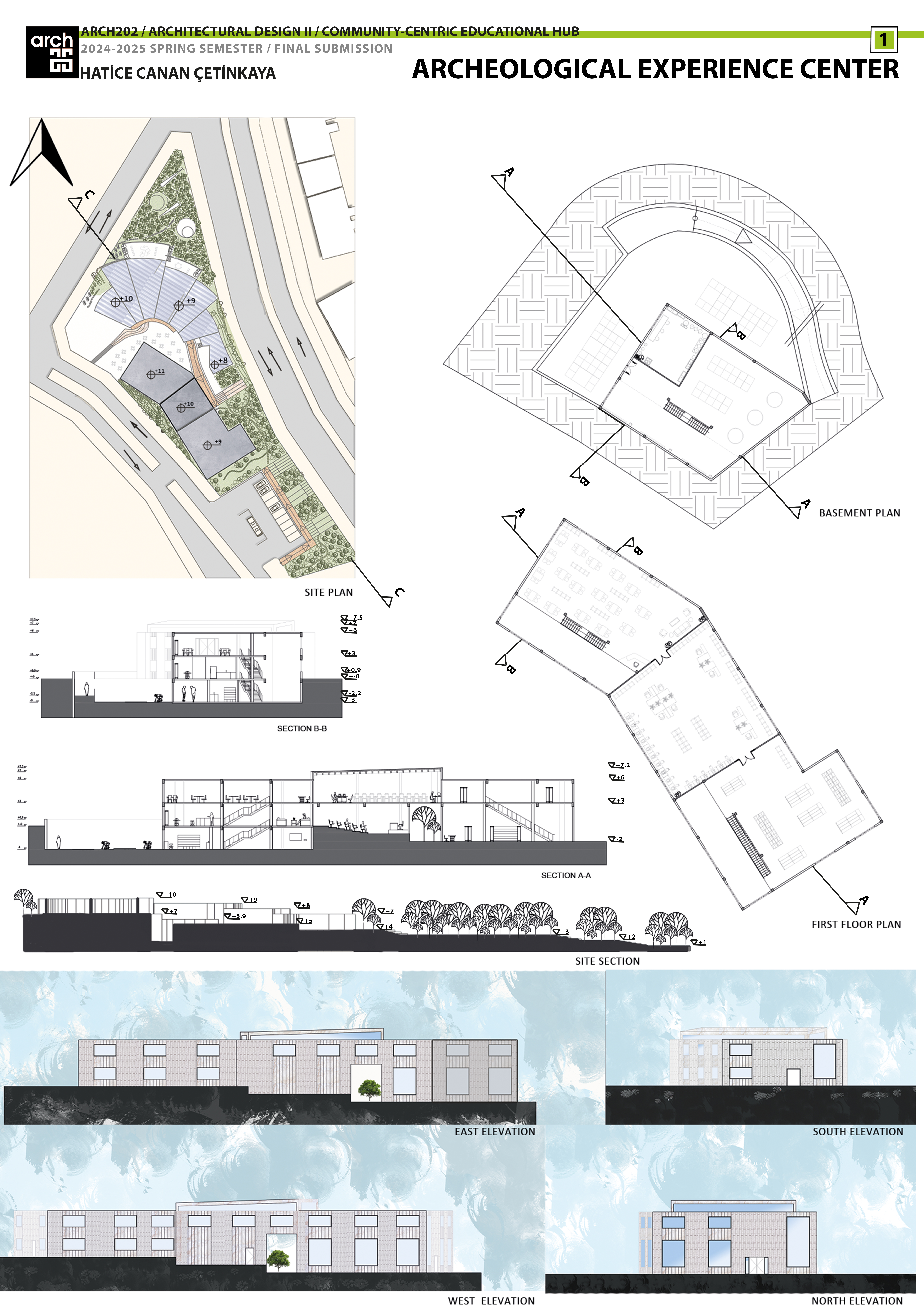Hittite Archaeological Experience Center
Located adjacent to a 1st-degree archaeological site in Kahramanmaraş, this project aims to offer visitors a unique experience through an innovative design approach that strengthens the relationship between history and place. The primary objective of the project is to enable visitors to experience the cultural and historical values of the Hittite era through both physical and digital means. Design Concept
The center combines the spatial and cultural traces of the Hittite era with modern experiential methods:
Time Travel with VR Headsets: Visitors can experience the daily life and architectural features of the Hittite period through virtual reality technology.
Archaeological Exhibition Area: Significant artifacts from the Hittite period, brought from nearby regions, are displayed in interactive exhibition setups. Earth Experience Workshops: Visitors can explore the unique textures of the Hittite era and traditional materials while creating their own replicas.
Spatial Organization
Workshop Areas and Accessible Ramp: The ramps harmonized with the terrain behind the workshops facilitate spatial circulation while encouraging visitors to participate in the workshops.
Library and Research Area: A library dedicated to Hittite history and archaeology serves as a central hub for learning and sharing knowledge. Mezzanine Floors: These floors provide visual and spatial connections between different levels, allowing visitors to experience the interrelations of spaces.
Material Selection
The project’s material selection prioritizes sustainability and harmony with the historical texture:
Use of Mudbrick: The workshops feature mudbrick, a characteristic material of the Hittite period. Natural Materials: The main building incorporates sustainable materials such as natural stone and wood, referencing the local texture.
Conclusion
The Hittite Archaeological Experience Center establishes a connection between the past and the present, offering visitors historical, cultural, and spatial depth. Highlighting the archaeological significance of the region, this project aims to contribute to academic research while enabling visitors to understand and experience this historical heritage.



